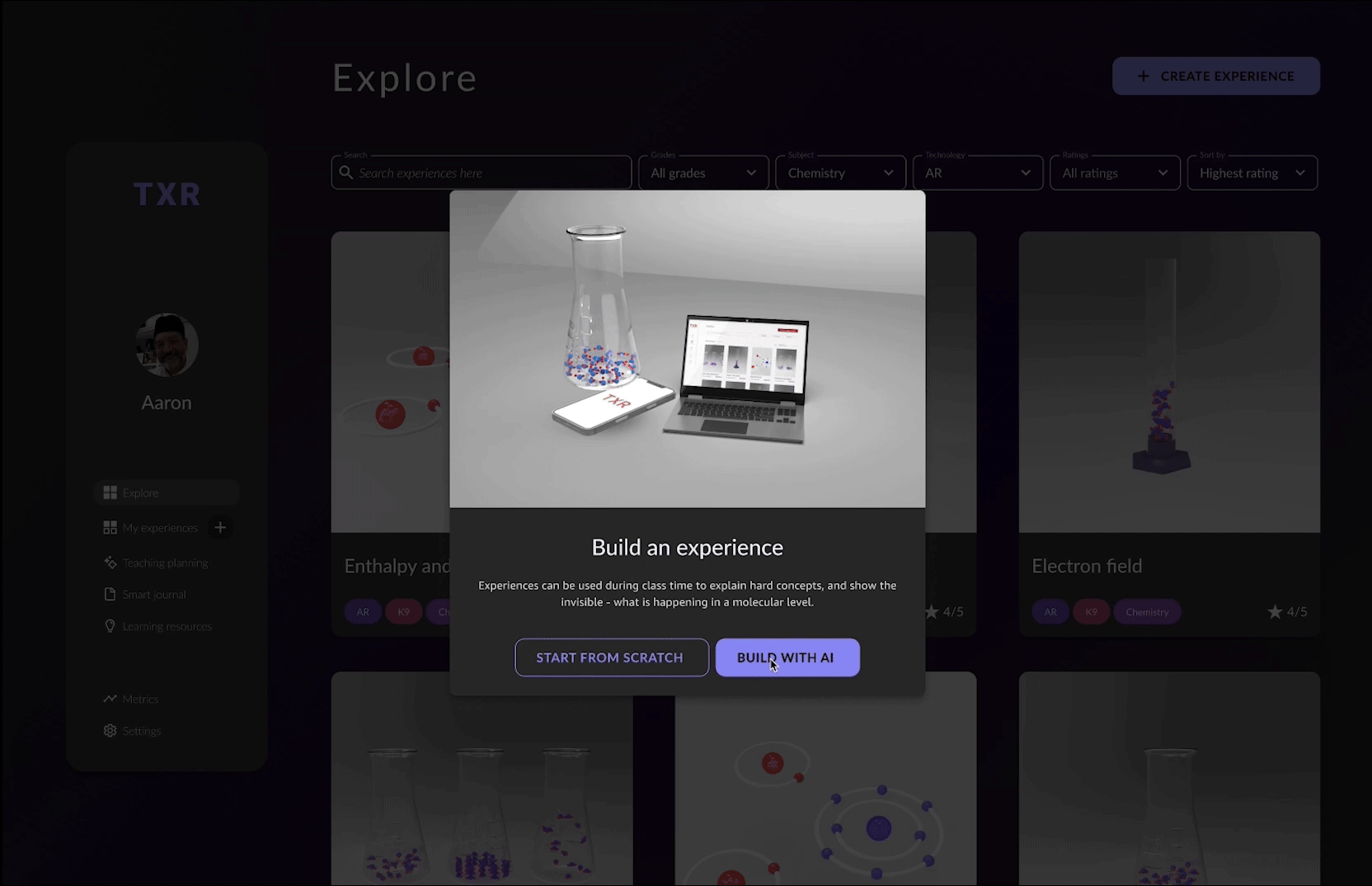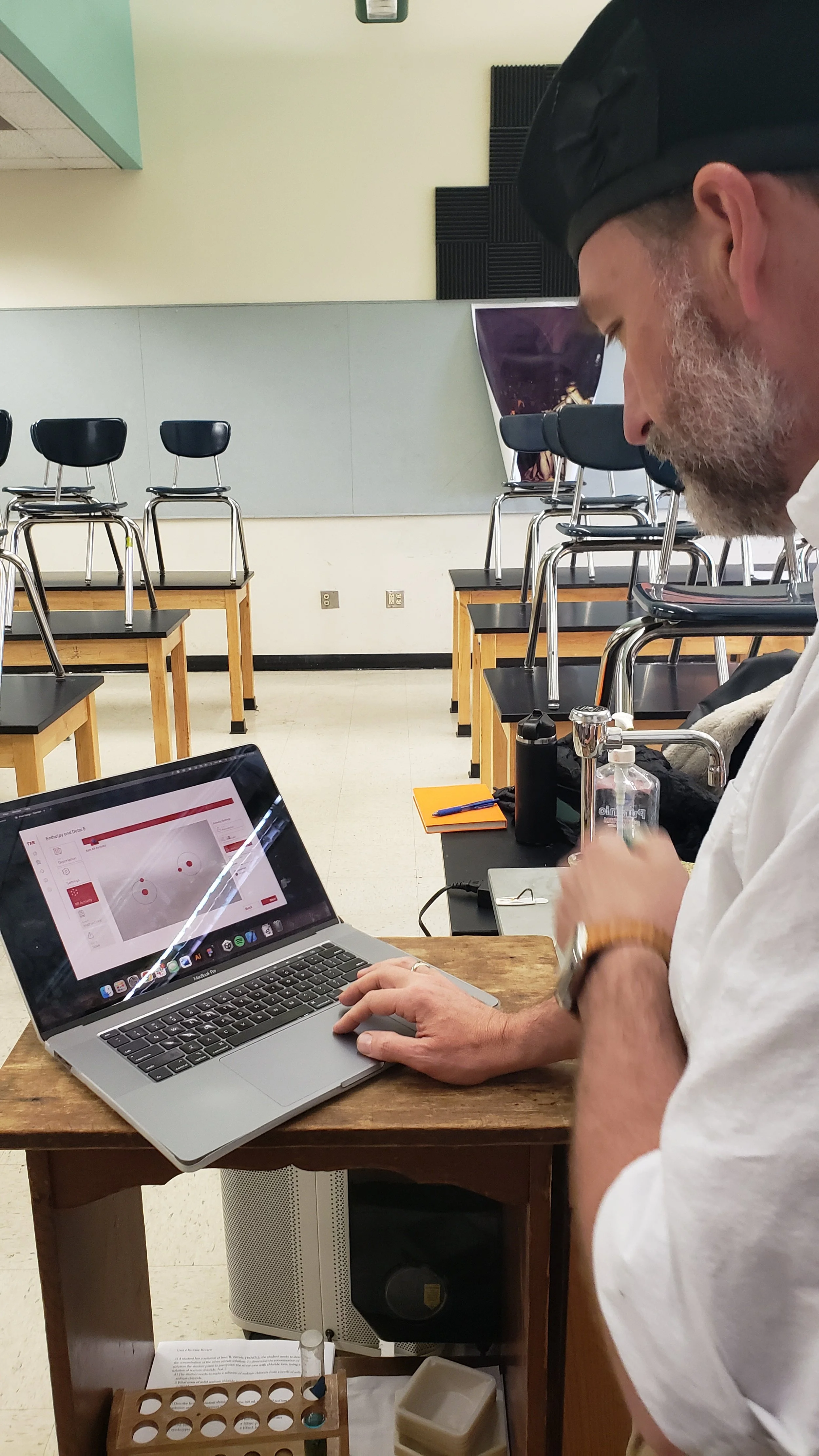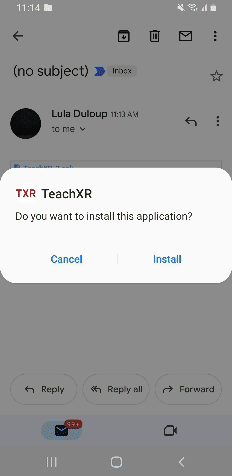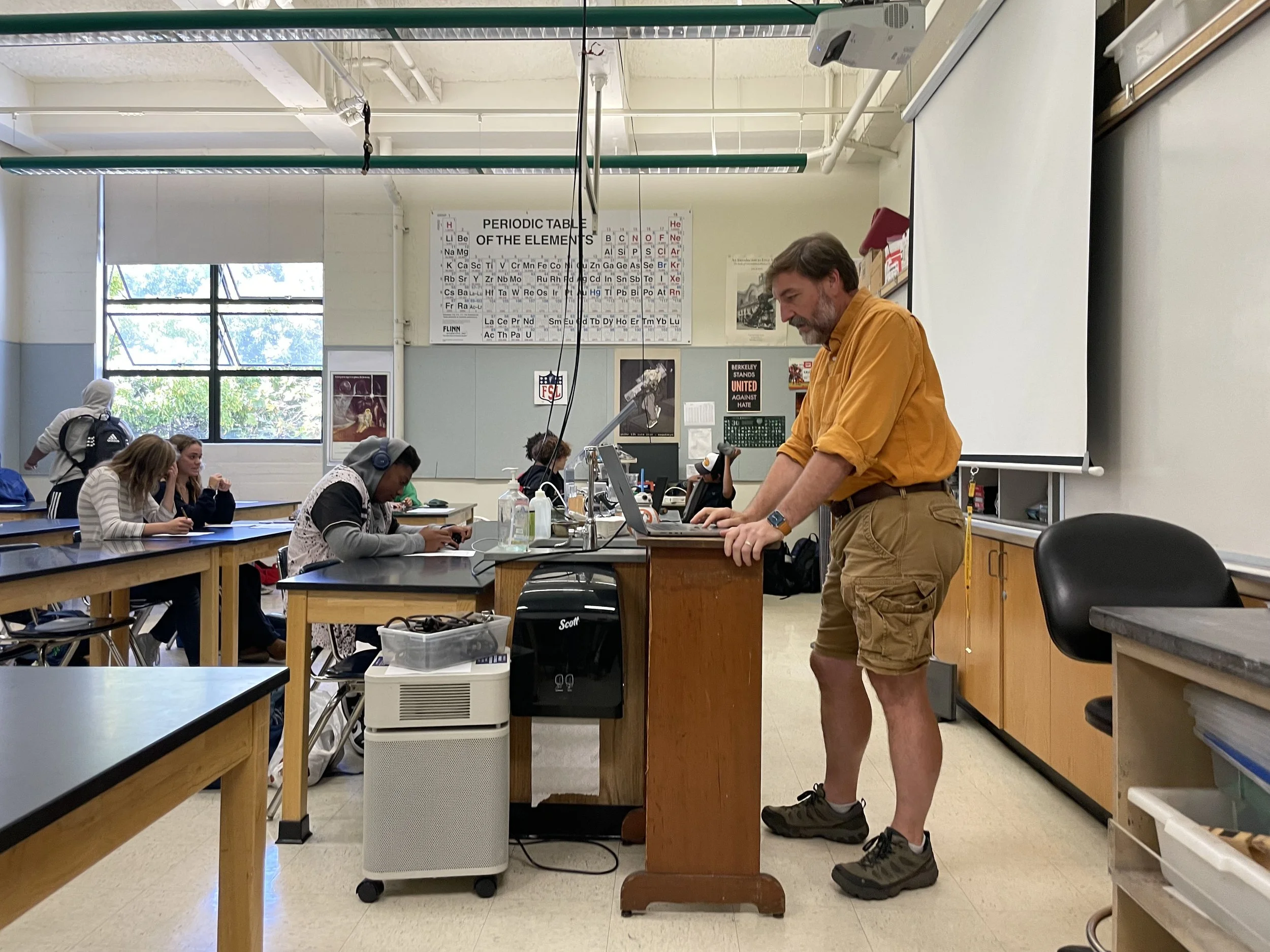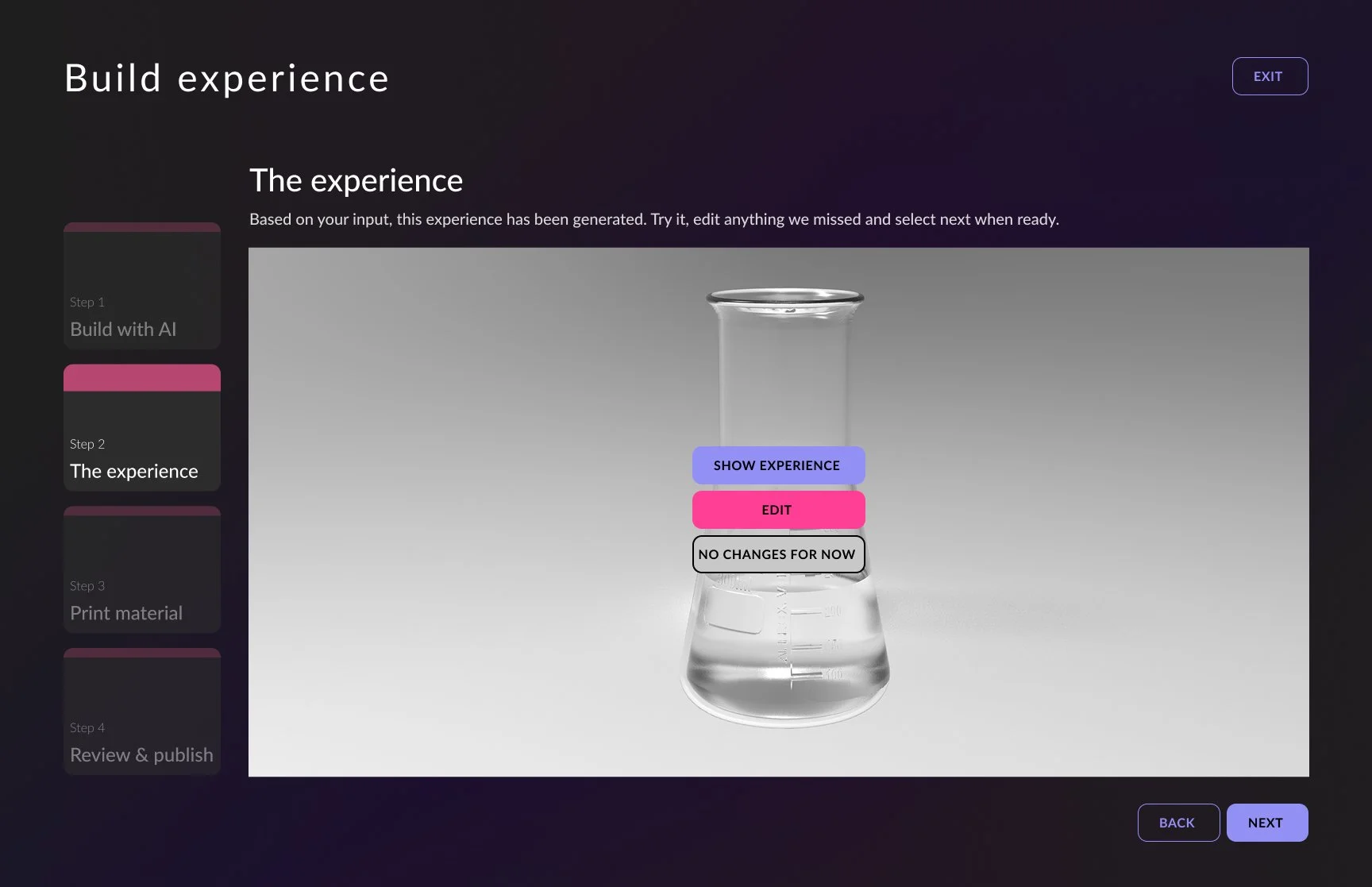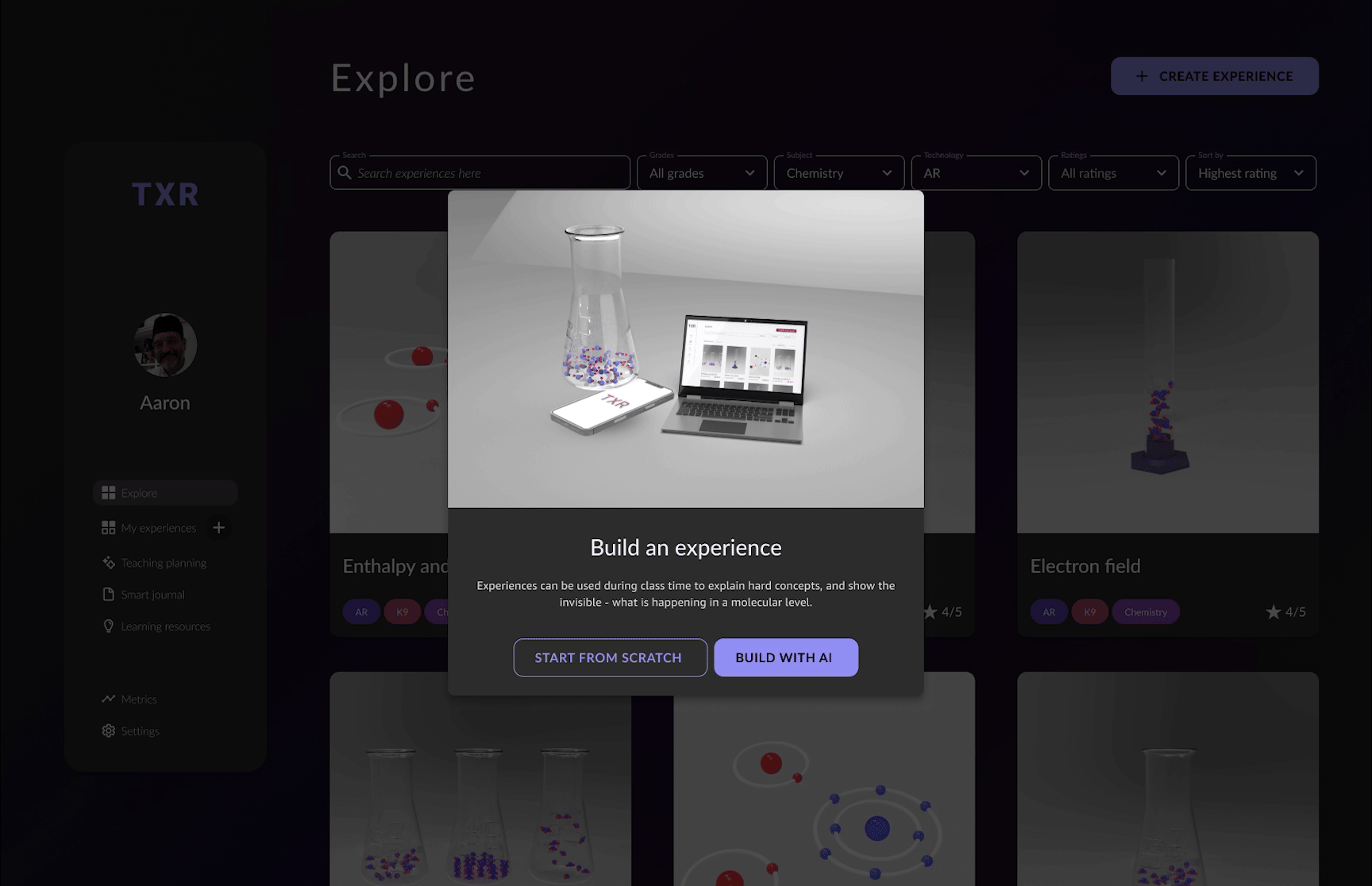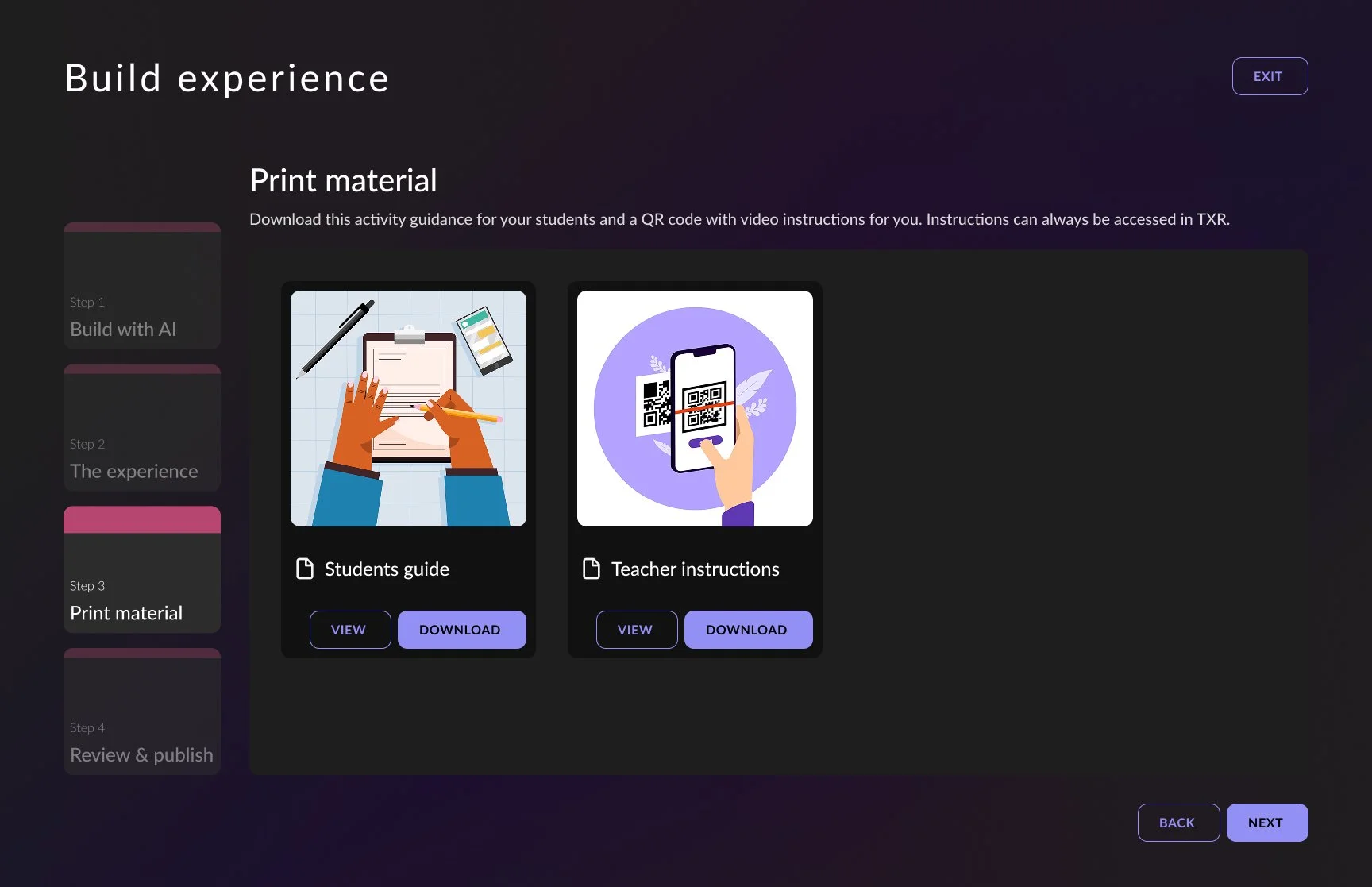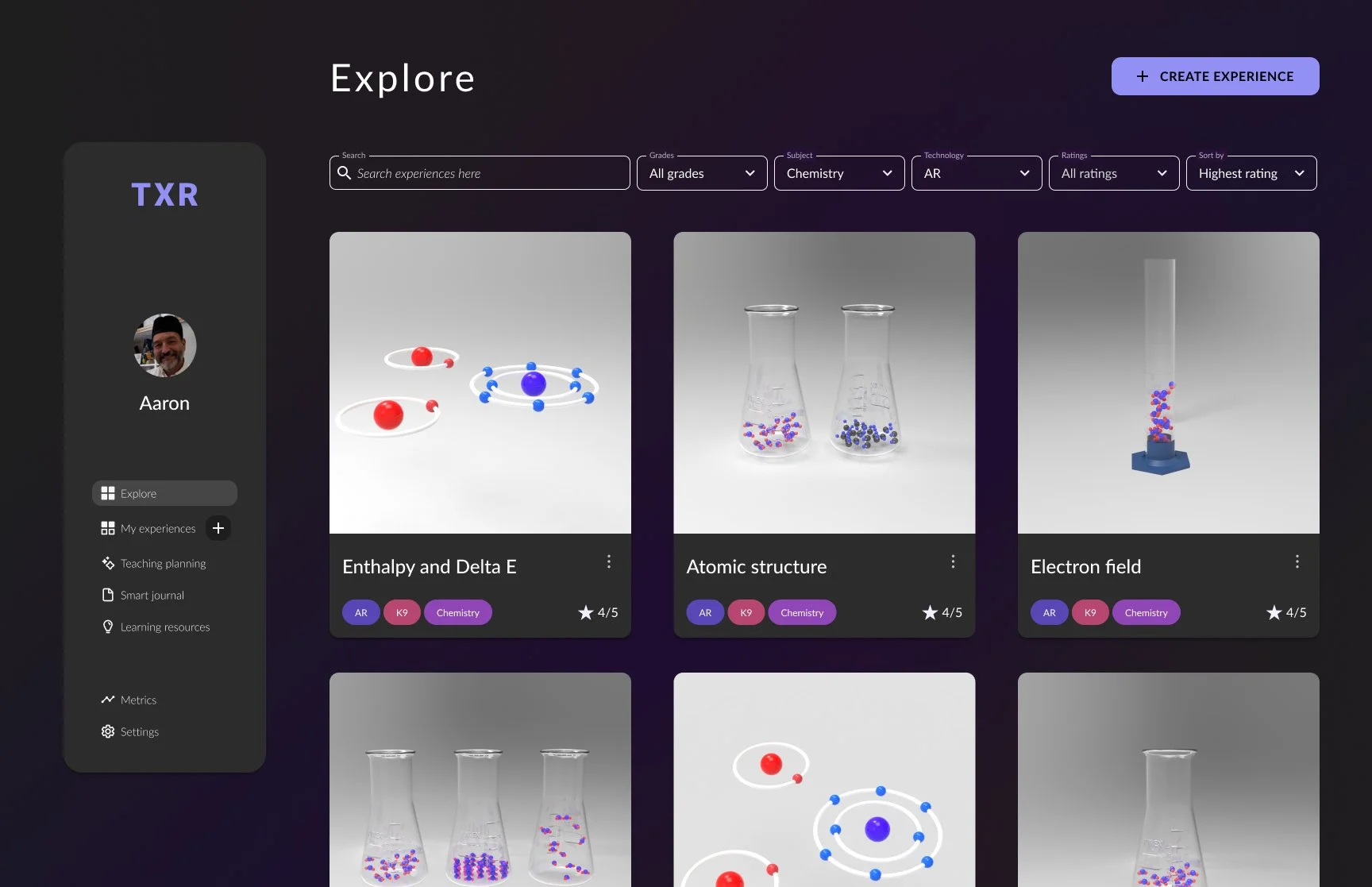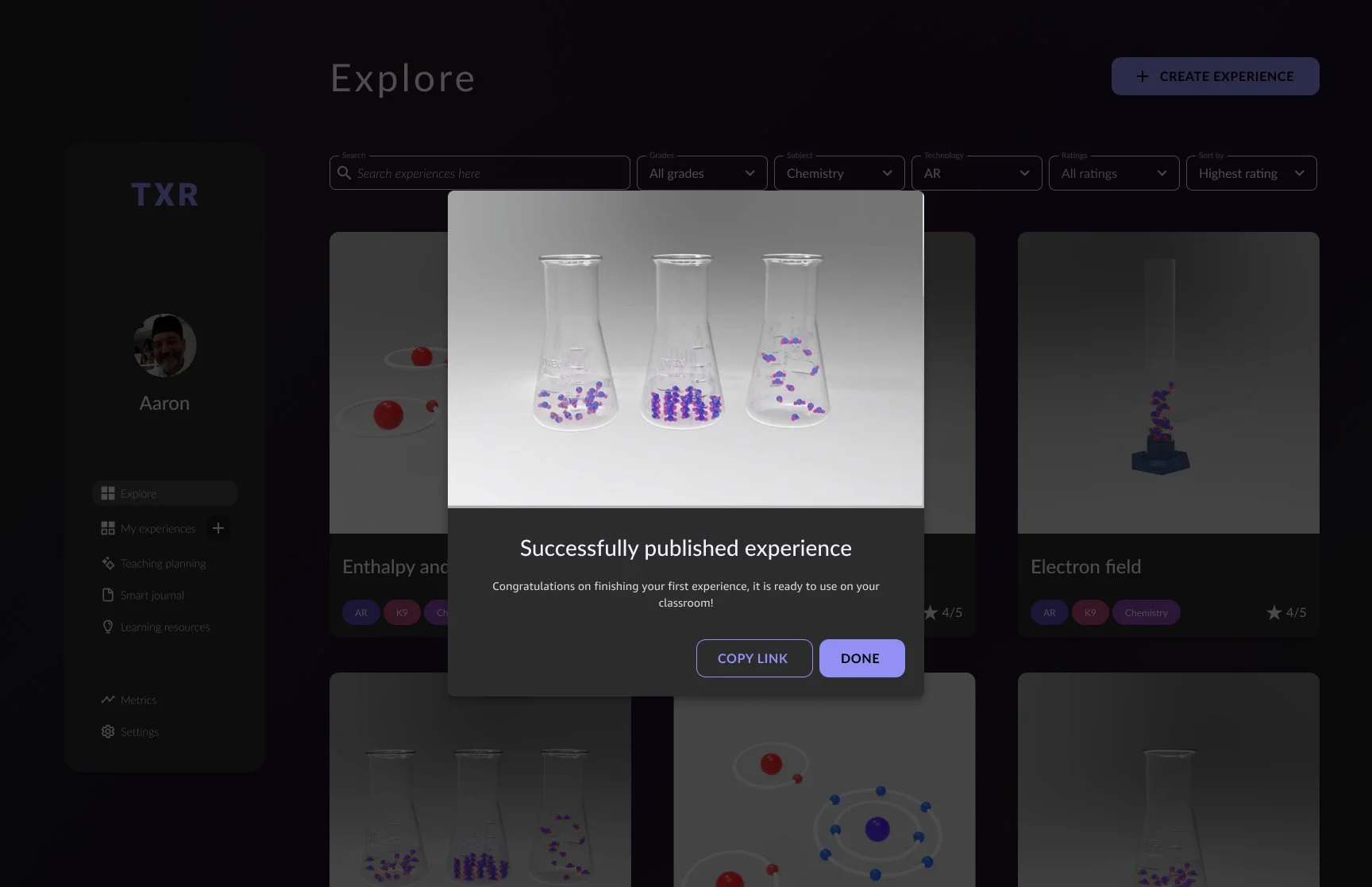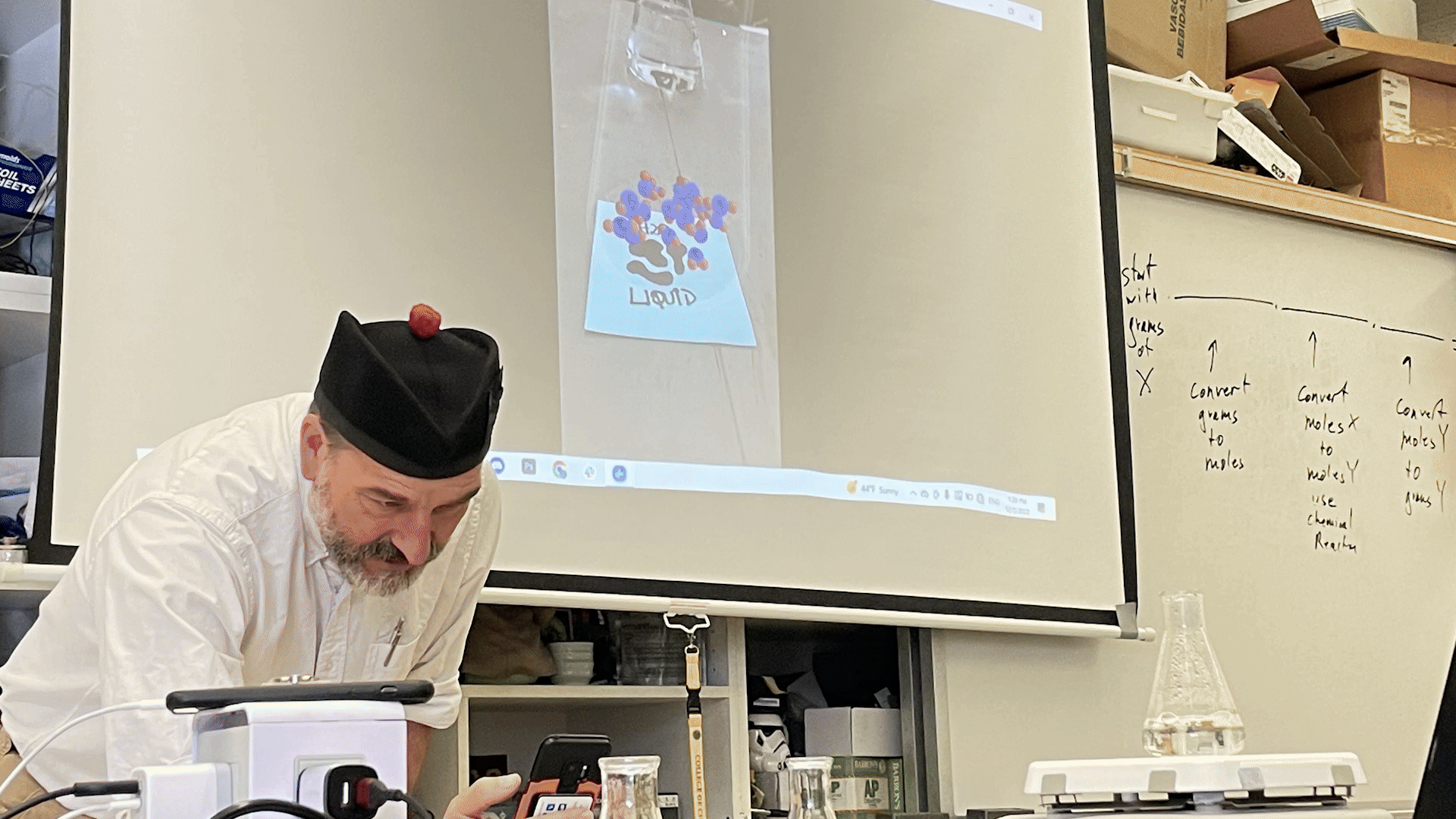TeachXR
TeachXR is a no-code tool that enables teachers to implement, customize, and share AR and VR storytelling experiences in their classrooms.
Why TeachXR?
Students find it hard to visualize the relantionship between the macroscopic, molecular and atomical levels.
AR and VR is a great tool to show the relationship between these levels in 3D
Teachers do not introduce emerging technologies to their classroom because there is a steep learning curve, lack of community, and lack of time.
My role
Research, ideation, UX/UI for app, AR app building in Unity, 3d modeling and rendering.
Collaboration with Hannah Bartolomea
Award winner
Q2 2025 Online Design Awards Competition
PROFESSIONAL WINNER in the T7 - VR/AR Experiences
PROFESSIONAL GOLD in the T2 - UI/UX Design
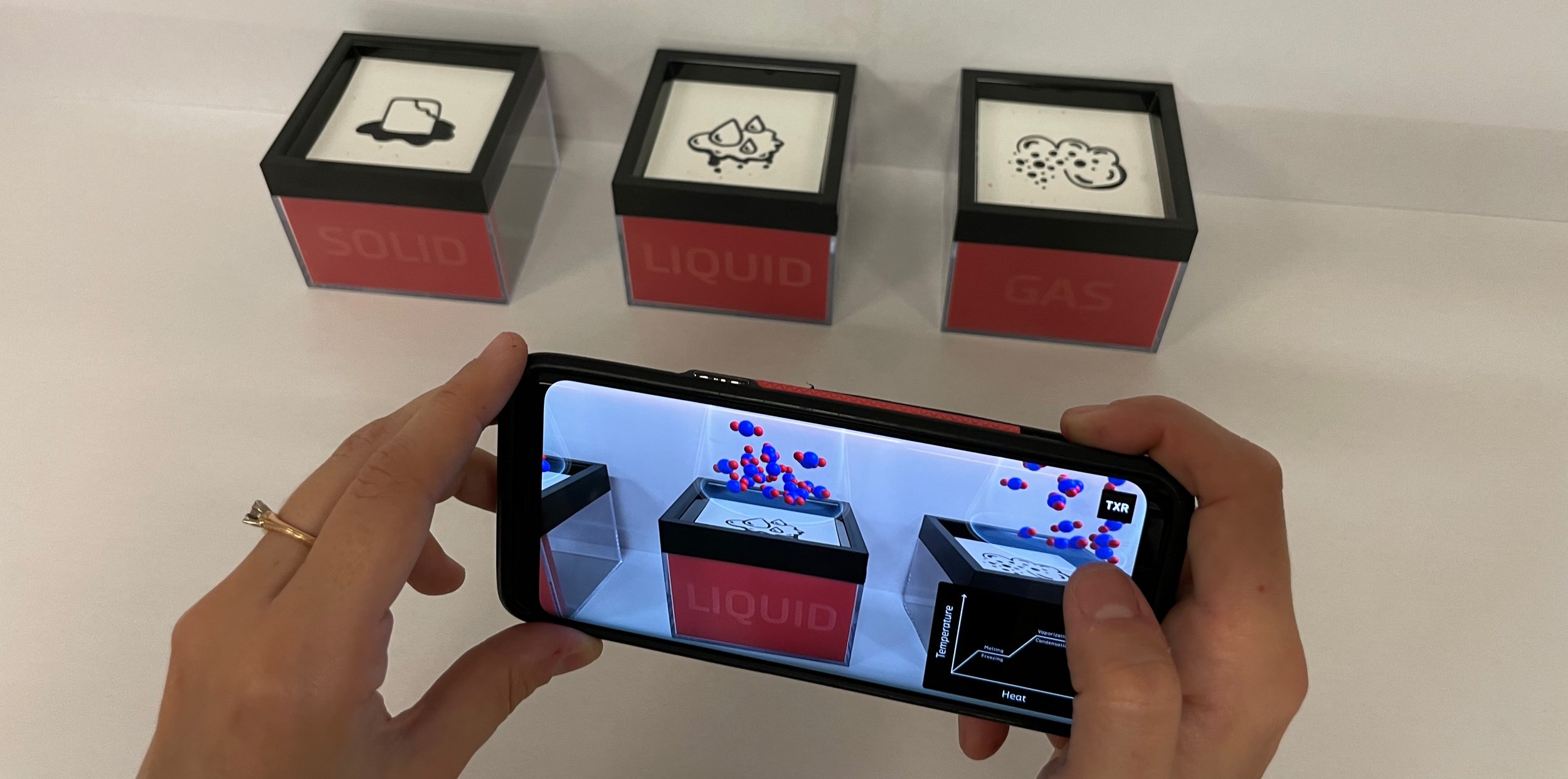
Scope of research
Analyzed over 40 academic papers, case studies, and design research sources.
Interviewed Aaron Glimme, a Chemistry teacher at Berkeley High School.
Conducted class observations on Aaron Glimme’s class
Consulted and interviewed 3 science high school teachers
Challenges in Chemistry Education
Chemistry concepts often involve abstract and invisible phenomena (e.g., atoms, molecules, reactions).
Traditional media like images and videos are insufficient to convey these 3D, dynamic processes.
Students struggle to develop accurate mental models with static or linear materials.
Potential of XR (Extended Reality)
XR technologies such as Augmented Reality (AR) and Virtual Reality (VR) enable immersive, interactive 3D experiences.
Studies show XR improves student comprehension, engagement, and memory retention in science education.
Barriers to Adoption
Time constraints: Teachers lack time to learn and integrate new tools.
Limited access to XR-ready content tailored for high school curricula.
Lack of peer support or communities to share resources and best practices.
Research conclusion
XR has strong potential to transform science education.
To succeed, solutions must address educators’ real-world constraints and empower them to use XR effectively.

Design Goals
Empower non-technical teachers to create XR learning experiences.
Align with curriculum and classroom workflows.
Reduce cognitive load through simple, story-based creation tools.
Foster collaboration through content sharing.
Solution highlights
Teacher-Centered Design
Interface inspired by tools teachers alreade use (e.g., slide editors)
AI guided experience with manual edit
Guided tutorials and prefix parameters for easy customization
Content adapted to their needs, includes printing materials for students and teachers
Slide editors have a vertical navigation with thumbnails and an editable space on the right. We replicated the same structure on our builder experience to make it easier to understand
AI builder experience is guided to help teachers create their AR experience, empty prompt boxes are too open ended and harder to get good results from the start.
Community layer
Ability to publish, download, remix and share experiences
Peer feedback and resource exchange to promote collaboration
Scalable architecture
Low-code backend allows easy expansion into other subjets
Real-time editing and versioning support future classroom needs
Learnings
Empower teachers
Be consistent with teachers’ common practices to facilitate new technology
Teachers can be AR and VR creators too!
AR and VR should be used to show the invisible, not to replicate the reality
Impact
Reduced barriers for AR adoption among teachers
Enabled chemistry teachers to become content creators and storytellers
created a scalable, community-driven platform with potential beyond chemistry
Award winner in ODA for AR experience and UX design
